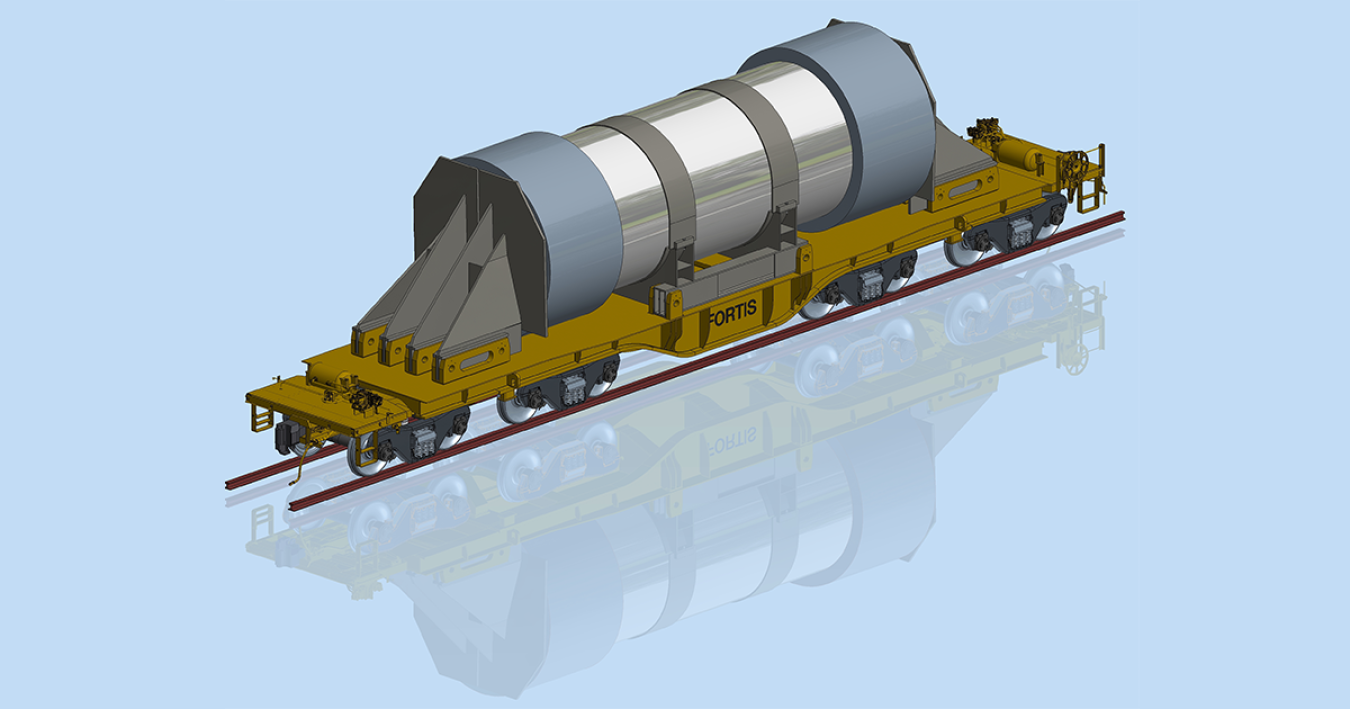Fabrication process starts for U.S. Department of Energy Fortis railcar project
March 18, 2024

The fabrication process is underway for the Fortis railcar project. Fortis is one of two high-tech railcars the U.S. Department of Energy (DOE) is developing to help transport the nation’s spent nuclear fuel and high-level radioactive waste.
Fortis is expected to be operational before the end of the decade.
Full Steam Ahead
Fortis is an 8-axle flat-deck railcar that will come fully equipped with high-tech sensors and monitoring systems. Its design was approved by the Association of American Railroads in 2021, allowing DOE to move forward in awarding contracts to start building a railcar prototype.
Kasgro Rail recently started fabricating deck components for the Fortis prototype at its facility in New Castle, Pennsylvania. The project is also receiving technical and design support from Pacific Northwest National Laboratory.

Once the Fortis prototype is built, it will then undergo extensive single- and multiple-car train testing at the Federal Railroad Administration’s Transportation Technology Center in Pueblo, Colorado.
"The Fortis railcar's move from design into fabrication and eventual testing demonstrates DOE's commitment to safe and secure spent nuclear fuel transportation,” said Dr. Erica Bickford, DOE’s federal manager for the Fortis railcar project. This is a necessary component to operationalize DOE’s integrated waste management system for storage and disposal of spent nuclear fuel."
Flexible Transportation
DOE also developed a 12-axle railcar, called Atlas, which wrapped up final testing in 2023.
The two railcars will provide the DOE transportation system more flexibility when transporting payloads of spent nuclear fuel and high-level radioactive waste to future federal interim storage facilities and disposal sites.
The Fortis design incorporates the same cargo attachment system as the Atlas railcar and will have the same integrated security and safety monitoring system.
It will be shorter in overall length than Atlas and used to ship smaller and lighter packages, or to load casks of spent nuclear fuel at nuclear power plants that may be space-constrained.
On average, DOE expects to ship about five casks of spent nuclear fuel on a train at a time, with each railcar carrying one cask.
DOE intends to eventually transport more than 140,000 metric tons of commercial spent nuclear fuel that is estimated to be generated in the U.S. by 2060. The transport is expected to occur over many decades.
The Department is currently pursuing a consent-based process to site one or more federal consolidated interim storage facilities for spent nuclear fuel to fulfill its responsibility to take ownership of this material and eventually dispose of it.

